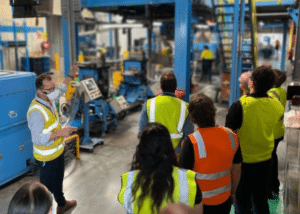What are the traits of an effective leader?
The role of the leader is changing from decision-maker to enabler. Knowing when to step in is just as important as knowing when to step back.
An effective leader is too often tied to the notion of the hero – the one with the most information, the most wisdom and experience, and the one who makes all the decisions.
But in our modern, complex world of work, it’s becoming increasingly impossible to operate in that way. Add to that all of the books, articles, posts and podcasts on leadership, and it’s safe to say the expectations of a leader have surmounted to unrealistic heights.
Understandably, many leaders are looking for a simpler approach.
The role of the leader has arguably changed from the one who makes all the decisions, to the one who is responsible for bringing people together – creating the conditions for quality interactions and therefore, better decision making.
By bringing people together, the expectation is no longer on the leader to make all the decisions. The decisions of a leader become more centred around how to invite people in, how to engage them, and how to connect people together to create meaningful outcomes.
The notion of servant leadership – the leader who serves those around them – tips the traditional model of leadership on its head. It’s been an important part of the way leadership has developed. Good leaders do serve, but they also build on other strengths.
Firstly, a good leader proactively creates a good space.
They have a purpose in bringing people together.
And, perhaps most importantly, they know when to step forward, and when to step back.
These qualities allow for a range of behaviours – from authoritative when needed, to more often, enabling and facilitating.
When considering space, it’s not only the physical space which is important, whether it be an office, site, facility or any other location under their control that is both suitable and safe for the purpose. A leader also has a responsibility to ensure the psychological space is safe – that everyone feels comfortable and is able to interact positively with one another.
It also extends to head space – creating the time and space for themselves and those around them to think and reflect – not just move from one task or decision to the next.
In bringing people together, an effective leader will initiate, rather than dictate, the priorities. It is often the leader’s role to kick off the conversations or events that need to be started, but an effective leader will invite people in and engage them, rather than instruct them.
Through this process of engaging people in the process, the leader is in fact passing out power, connection and information to those around them, instead of controlling and curating the outcome.
Once connections are made and people are engaged, an effective leader can then recognise when to step back. Knowing when to step in and when to step back is perhaps the most important leadership quality.
In stepping back as a leader however, that doesn’t mean retreating back to the desk and closing the door. In fact, the most effective leaders also become participants in the process – whether that’s joining in the conversation, or remaining involved in day-to-day activities at the coal face.
The leader is effectively taking on the role of a host – inviting, connecting, and engaging.
In safety leadership, the goal of host leadership is to enable great performance, not prevent bad outcomes. It recognises that people are the solution. In order to reverse the focus from what’s wrong to what’s strong, the leader needs to give up control.
This shift allows for those with the greatest knowledge of how work is done – the frontline workers – to have ownership of their outcomes and be part of creating solutions.
When we look at the principles of Safety I versus Safety II, or HOP, the benefits of the new view can only exist when there is a fundamental shift in how we lead – from a mindset of people ‘following the procedure’ to recognising that most things go well most of the time, and that operational excellence exists within the people who do the work.








